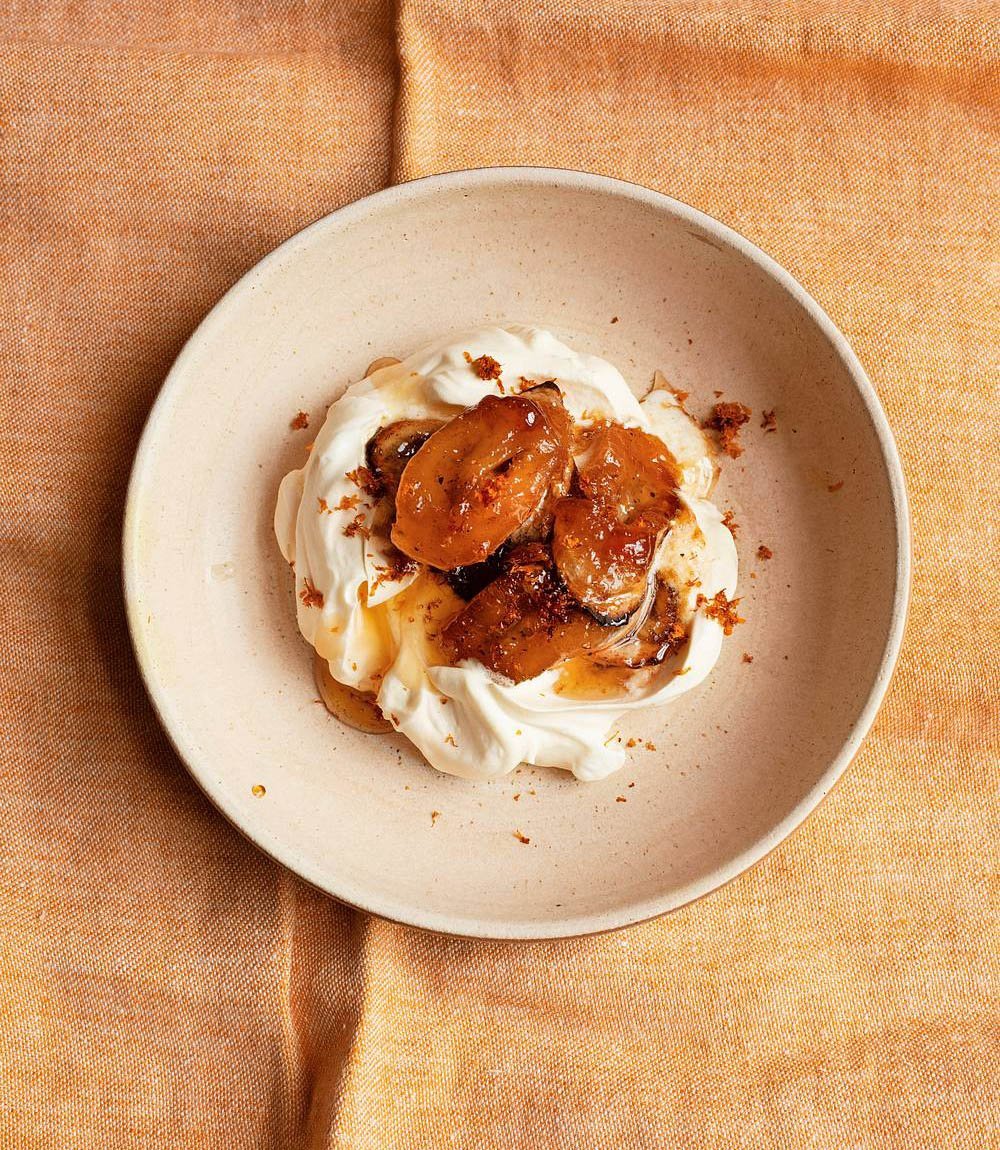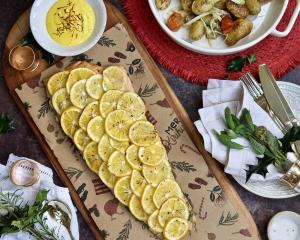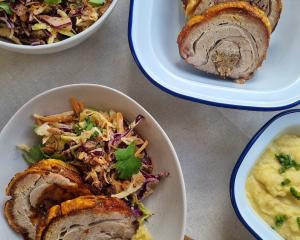
Every morning this week, I have run my fingers through the rosemary plants that sit in pots on the kitchen steps. Planted years ago, the bushes are robbed of their leaves as seasoning for the juices of a lamb roast or for aubergines to be cooked on the grill. (Mash the leaves with salt and black pepper and a drop or two of olive oil.)
Rosemary has long been a symbol of remembrance, but it is for its reliability that I appreciate it, being one of the few kitchen herbs that overwinters well in this garden. I picked clusters of thyme, too. Both were destined for an aromatic butter with which to baste chicken thighs as they roasted. The thyme is Doone Valley, a variety new to me, whose young growth is golden orange until the weather warms up, when it softens to a delicious buttery yellow.
Thyme is essential to this cook, but as a gardener it defeats me, and I must buy new plants every year. I grow them in pots, where I can lighten the soil with grit and leaf mould for better drainage. I could not do without thyme and not only in savoury recipes. Sometimes I make a thyme sugar, the leaves whizzed with white caster to make a lemon cake glisten.
Once in the kitchen, the rosemary and thyme leaves were mashed with butter and plump cloves of garlic. Some of the butter was rolled into logs and frozen for another day, the rest perfumed the kitchen all week.
Baked chicken, herb butter, orzo
Serves 4. Ready in 1 hour.
The herb butter is easiest to make when the butter has been out of the fridge for a while, so it creams more readily with the garlic and chopped herb leaves. I suggest grating the garlic by hand rather than chopping or slicing. The effect is less pungent than if it is chopped or sliced. Of course, you risk grating your fingertips in the process, so take care, or crush the cloves instead, using a pestle and mortar.
I suggest giving two thighs per person, ideally large fat ones from the butcher, with their skin intact, so it bastes the flesh as it roasts. The roasting juices are an integral part of the dish, as they always should be, which is why the accompanying orzo is transferred to the roasting tin and used to sponge them up.
Ingredients
8 chicken thighs, skin on and bone in
A little olive oil
90g of unsalted butter
2 Tbsp (5g) thyme leaves
2 Tbsp (5g) rosemary leaves
3 young plump cloves of garlic
1 Tbsp finely grated lemon zest
2 Tbsp lemon juice
200g orzo
Method
Remove the chicken from the fridge half an hour before you start cooking. Heat the oven to 200°C. Put the chicken thighs into a roasting tin or baking dish and brush them lightly with olive oil. Season them with a little salt and black pepper, then roast for 20 minutes.
While the chicken roasts, chop the butter into small pieces and put it into the bowl of a food mixer. Finely chop the thyme and rosemary leaves and scatter them into the butter with a generous grinding of black pepper and salt.
Peel the garlic, then grate it to a paste using a fine grater. (If you prefer, crush the cloves with a pestle and mortar.) Add the garlic, lemon zest and lemon juice to the butter and mix for a minute or two until fragrant and thoroughly combined.
Once the chicken has roasted for 20 minutes, baste each thigh with the butter, then return to the oven.
Put a medium-sized pan of water on to boil, salt it generously then, when it comes to the boil, tip in the orzo and let it boil for 15-20 minutes until silky.
Drain the orzo. Remove the chicken from the oven and transfer to a warm plate, leaving the buttery juices behind in the tin. Stir the drained orzo into the roasting tin, moving it round in the juices so the pasta picks up the delicious savoury sediment left behind by the chicken. Check the seasoning and correct it to your taste — you may like a little more pepper or lemon juice — then spoon on to a large warm plate, place the chicken pieces among it, and bring to the table.

Bananas, honey, yoghurt
Bananas rarely let us down in the search for a quick midweek dessert, and can be considered treat enough when eaten with any sort of dairy produce. They are particularly splendid when grilled with honey and eaten with cream and yoghurt.
Serves 2. Ready in 20 minutes.
Heat an overhead (oven) grill. Peel 3large, unblemished bananas and slice them into coins, about half a centimetre thick. Squeeze the juice from a small lemon and toss the bananas in it.
Line a small baking tray or grill pan with foil — it will make washing up easier. Scatter the bananas over the foil, keeping them in a single layer.
Crack open 4 cardamom pods and crush the little black-brown seeds that lie within to a powder with a couple of large pinches of ground cinnamon. (I use my spice grinder for this, but you can do it by hand, too.) Mix the spices with 40g of golden caster sugar.
Dust the sugar over the bananas, trickle with 2 Tbsp of liquid honey, then place them under the grill. Depending on how close they are to the heat, they should take about 7-8 minutes to caramelise.
Whip 125ml of double cream until thick enough to sit in soft mounds, but not firm enough to stand in peaks. Gently fold 125ml of thick yoghurt into the cream, taking care not to over-mix.
Divide the yoghurt mixture between two shallow serving bowls, then spoon the sizzling bananas and honey over and a little grated orange zest. Eat as the warm honey melts into the yoghurt and cream. — The Observer












